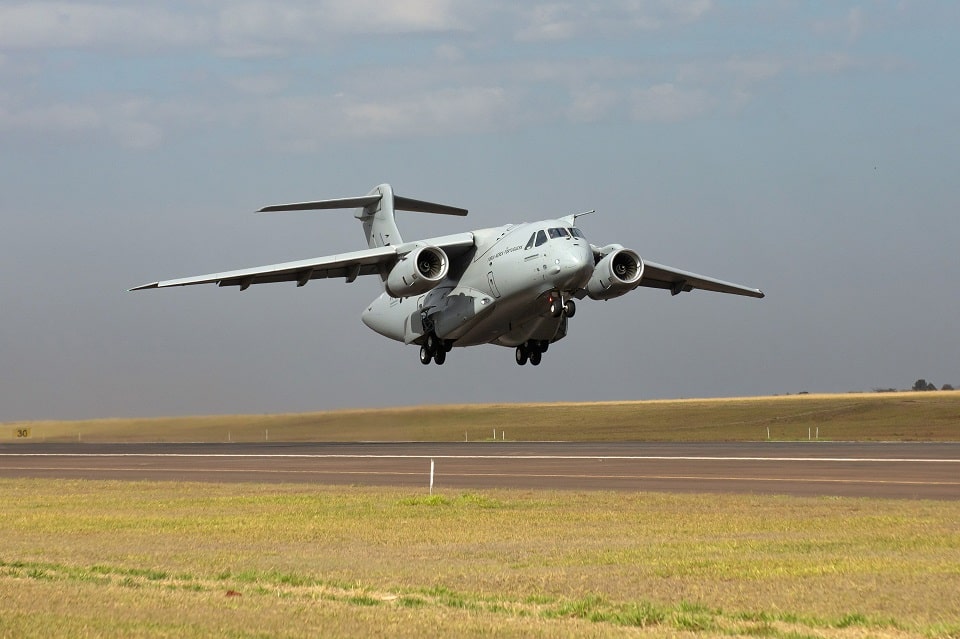Aerospace
Brazil’s Embraer eyes mega transport aircraft deal with IAF

Brazilian aerospace company Embraer said that if it wins the contract to build the C-390 Millennium planes, it will set up an assembly line in India to meet the Indian Air Force’s need for medium transport aircraft. The IAF is planning to replace its aging fleet of AN32 aircraft with 40 to 80 medium transport aircraft.
Under the condition of anonymity, the officials said that the C-130J from US aerospace company Lockheed Martin, the C-390 Millennium from Brazil’s Embraer Defence and Security, and the A-400M aircraft from Europe will compete for the Indian order. This order is anticipated to involve technology transfer and the establishment of a manufacturing line in India for high-level localization.
Qantas and Jetstar discount one million seats in Mega scale.(Opens in a new browser tab)
The 18 to 30-tonne cargo-carrying capacity range is where the IAF is looking for a new transport aircraft. Joao Bosco Costa Junior, president and chief executive officer of Embraer Defence and Security, stated that the company is in discussions with Hindustan Aeronautics Limited (HAL) and certain Indian private firms to examine potential collaboration opportunities to bid for the programme.
The company was setting the framework for a proposal on the IAF order and was in discussions with regional businesses about a potential partnership to submit a bid for the project. The Air Force asked original equipment manufacturers (OEMs) earlier this year for information regarding the aircraft they could provide. The C-390 was on exhibit during the February Aero India 2023 event in Bengaluru.
IndiGo 4 th most punctual airline globally: OAG Punctuality League 2018(Opens in a new browser tab)
The “Single Stage-Two Bid System” must be followed by bidder companies when submitting their offers. In two separate sealed envelopes, each vendor must submit a “Request for Proposal” that combines both technical and commercial bids. The shelf life of the promotional offers must be at least 18 months. A Technical Evaluation Committee (TEC) will assess the technical offers to ensure they are in compliance with the RFP.
Vendors who have equipment that has been approved then go through a “No Cost No Commitment” trial examination in India. To establish whether the equipment is suitable for adoption, a staff review and field assessments are both used in the evaluation process.
Embraer’s aspiration to secure the contract for building the C-390 Millennium planes for the Indian Air Force has prompted discussions about potential collaboration with Indian partners. The competitive bidding process involves technical and commercial evaluations, field trials, and ultimately, the selection of the most cost-effective vendor. This initiative signifies a significant step towards enhancing India’s medium transport aircraft capabilities.

Aerospace
Boeing Transfers Rocket Stage to NASA, Paving Way for Human Moon Mission

Boeing has achieved a significant milestone by providing NASA with the second core stage of the Space Launch System (SLS) rocket.
This crucial component, crafted at NASA’s Michoud Assembly Facility (MAF), is set to propel the Artemis II crew into lunar orbit, marking humanity’s return to deep space after a 50-year hiatus.
The monumental Boeing-built rocket stage, the largest element of the Artemis II mission, will embark on a journey aboard the Pegasus barge, traveling 900 miles to NASA’s Kennedy Space Center.
Comparison of two legendary aircraft B777x vs B747 aircraft:Click here
Upon arrival, it will be meticulously integrated with other essential Artemis II components, including the upper stage, solid rocket boosters, and NASA’s Orion spacecraft within the iconic Vehicle Assembly Building. This intricate integration process is a vital step toward the eagerly anticipated Artemis II launch, slated for 2025.
“Boeing-built products helped land humankind on the moon in 1969, and we’re proud to continue that legacy through the Artemis generation,” remarked Dave Dutcher, vice president and program manager for Boeing’s SLS program. “Together, with NASA and our industry partners and suppliers, we are building the world’s most capable rocket and paving the way to deep space through America’s rocket factory in New Orleans.”
NASA, Lockheed Martin Reveal X-59 Quiet Supersonic Aircraft:Click here
The delivery of Core Stage 2 marks a significant achievement in the evolution of the SLS rocket. Towering over 200 feet and powered by four RS-25 engines, this core stage, coupled with two solid-fueled booster rockets, will generate a staggering 8.8 million pounds of thrust. This immense power is crucial to launching Artemis II and future missions into the vast expanse of space.
The SLS rocket stands unparalleled in its capability to transport both crew and substantial cargo to the moon and beyond in a single launch. Its extraordinary capacity will facilitate the delivery of human-rated spacecraft, habitats, and scientific missions to destinations including the moon and Mars, ushering in a new era of space exploration.
-

 Travel1 week ago
Travel1 week agoAir India to Expand US Operations with Three New Routes After a Decade
-

 Travel2 weeks ago
Travel2 weeks agoWhy We Should Avoid These Stamps in a Passport
-

 Airlines1 month ago
Airlines1 month agoInvestigations Reveal Fake Chinese Titanium in Boeing and Airbus Jets
-

 Tech4 weeks ago
Tech4 weeks agoChina’s CATL Plans 1,800-Mile Electric Plane Launch by 2027
-

 Airport3 days ago
Airport3 days agoTop 10 Largest Airports in the World by Size
-

 Aerospace4 weeks ago
Aerospace4 weeks agoChina’s Fighter Jets Turn Wings into Autonomous Drones
-

 Airlines4 days ago
Airlines4 days agoAir India Rolls Out A350s for Delhi-New York JFK and Newark Routes
-

 Defence3 weeks ago
Defence3 weeks agoBoeing Enhances Chinook with New Engines and Block II Upgrades at $96 Million







